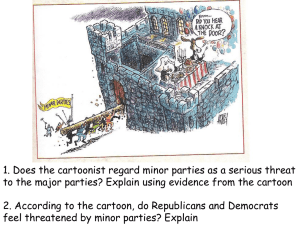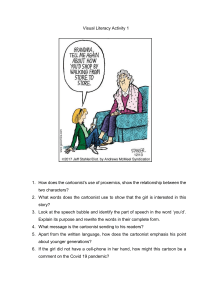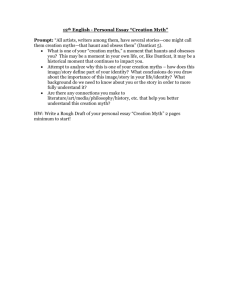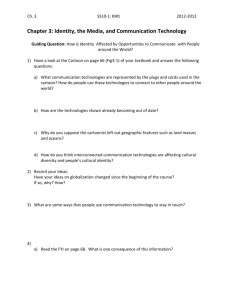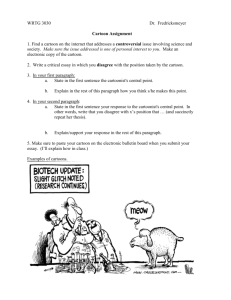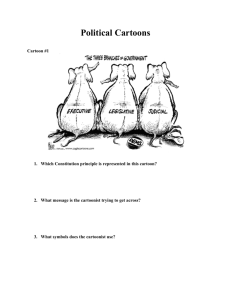Handout: Stereotypes and Ideologies
advertisement
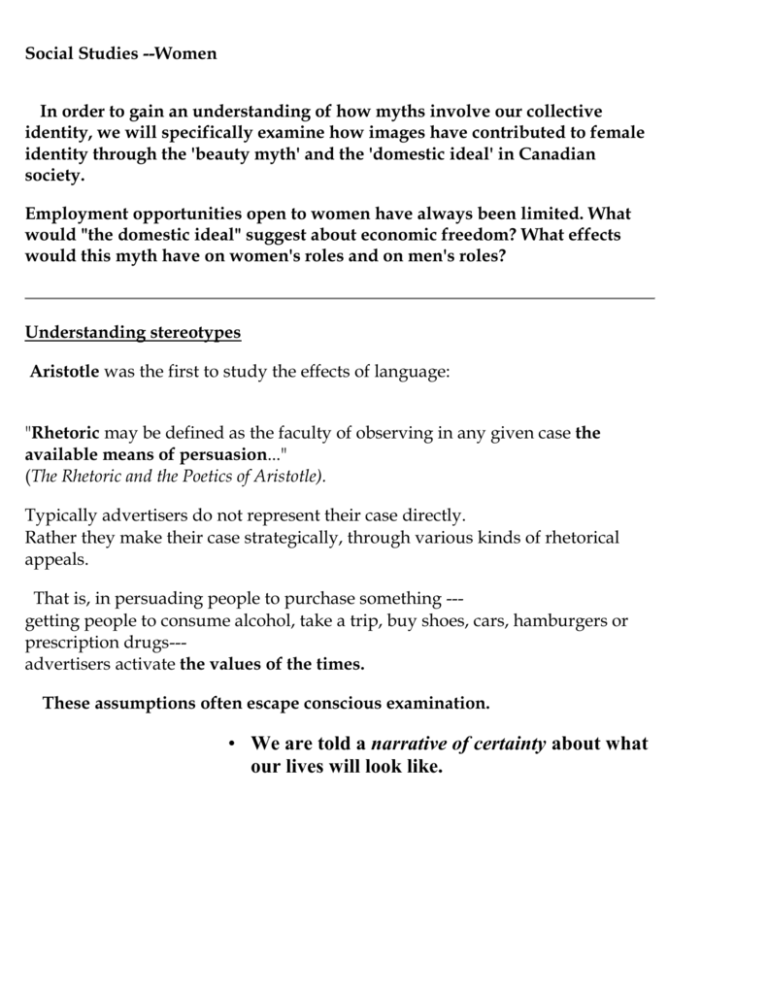
Social Studies --Women In order to gain an understanding of how myths involve our collective identity, we will specifically examine how images have contributed to female identity through the 'beauty myth' and the 'domestic ideal' in Canadian society. Employment opportunities open to women have always been limited. What would "the domestic ideal" suggest about economic freedom? What effects would this myth have on women's roles and on men's roles? Understanding stereotypes Aristotle was the first to study the effects of language: "Rhetoric may be defined as the faculty of observing in any given case the available means of persuasion..." (The Rhetoric and the Poetics of Aristotle). Typically advertisers do not represent their case directly. Rather they make their case strategically, through various kinds of rhetorical appeals. That is, in persuading people to purchase something --getting people to consume alcohol, take a trip, buy shoes, cars, hamburgers or prescription drugs--advertisers activate the values of the times. These assumptions often escape conscious examination. • We are told a narrative of certainty about what our lives will look like. 1. Who was Charles Revlon? The advertising images used suggested romance, leisure, luxury and represented hope for a better life. 2. "Avon" employed a different advertising strategy. Women were working outside of the home selling cosmetics. 3. Mary Kay Ash’s business innovation was to supply prizes for top-selling women. The prizes stand for Miss. America --crowns, rings, jewellery, Pink Cadillac. 4. In the fifties, images of freedom and lack of responsibility also represented a hope for a leisurely life. The kinds of advertising techniques used were resisting parents, adult female status, and sexuality. Cartoonists also poke fun of cultural assumptions. Traditional occupations open to women were as teachers, nurses, and secretaries. "With this equal pay in effect, I felt free to include Miss Figsby in our draw to see who takes the weekly grade II football ..." What issue, event, idea or situation does the cartoon deal with? [pay equity: equal pay for equal work] 1. What methods does the cartoonist use to identify the issue? [dialogue] 2. Who are the people in the cartoon? [a general class of ‘teachers’] 3. What is your reaction? Is it thought-provoking or funny? 4. What is the point-of-view of the cartoonist—where does he stand on the issue? [that the work women teachers do is not equal; that male teachers have more duties in terms of discipline] 5. What message is the cartoonist communicating? [that pay equity is based on the idea that work is equal; The glamour promised by the new working woman with financial freedom is a myth.] 6. In what way does the cartoon provide historical insight? [cultural idea that a teacher must be an aggressive enforcer; that there are two sides to the issue of pay equity/equality; that the reality of women’s lives looks very different from the cultural myths] Ideologies • Individuality: make yourself / Progress • Consumerism: cultivation of personality (better career, professional reasons) • Social Power: power over things How do these cartoons “bring down” cultural myths? Newspaper headline: Sun Fashion and Beauty Clinic "Hi, Mom ... did you make a silk purse from the sow's ear?" "In the interest of traffic safety and employee relations, J.G. wished it clearly understood that only the drinking part be dropped from the office Christmas party ..." "Imagine someone saying barmaids wouldn't be able to manage the customers.” "Darling ... you look deductible tonight." "But could you afford to love, honor and keep me in sickness ... and in health, too?"
